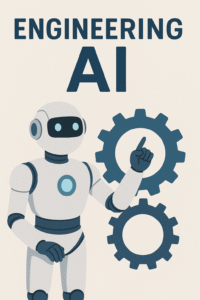Image Source: https://www.angularjsindia.com/blog/what-is-the-difference-for-web-development-front-end-vs-back-end/
In today’s interconnected world, the web has become an integral part of our daily lives. Whether we are browsing social media, shopping online, or accessing information, websites are the virtual gateways that facilitate these experiences. Behind the scenes, web developers work tirelessly to bring these websites to life, employing a range of skills and technologies. Two fundamental components of web development are front end and back end development. Let’s delve into the world of these two crucial aspects and explore their roles in creating exceptional web experiences.
Front End Development: Front end development refers to the process of building the client-side of a website, the part that users interact with directly. It encompasses the visual and interactive elements that users see and engage with in their web browsers. Front end developers work with a combination of programming languages, frameworks, and tools to craft visually appealing and user-friendly interfaces. HTML (Hypertext Markup Language), CSS (Cascading Style Sheets), and JavaScript are the three main building blocks of front end development.
- HTML: HTML forms the backbone of web pages, providing structure and content. It defines the layout and organizes the information that users see on a website. Elements such as headings, paragraphs, images, links, and forms are created using HTML tags, giving structure and meaning to the content.
- CSS: CSS brings life to HTML elements, adding style, layout, and visual appeal. Cascading Style Sheets enable developers to customize the appearance of web pages by defining colors, fonts, margins, padding, and positioning. It ensures consistency across the website, creating a cohesive and aesthetically pleasing user experience.
- JavaScript: JavaScript is a versatile programming language that enables dynamic and interactive features on web pages. It allows developers to create responsive elements, handle user interactions, validate forms, load data dynamically, and enhance the overall functionality of the website.
Front end developers often work with frameworks and libraries like React, Angular, or Vue.js to streamline the development process, manage complex UI components, and ensure efficient code organization. They collaborate closely with UI/UX designers to bring their visual designs to life, ensuring the website meets the desired user experience and design standards.
Back End Development: While front end development focuses on the user interface and client-side interactions, back end development powers the behind-the-scenes operations of a website. It involves building the server-side logic, databases, and APIs (Application Programming Interfaces) that enable the website to function seamlessly. Back end developers work with a range of programming languages, frameworks, and technologies to handle data processing, server management, and business logic.
- Server-side programming languages: Popular languages for back end development include Python, Ruby, PHP, Java, and Node.js. These languages handle the core functionality of a website, enabling data processing, authentication, database connectivity, and interaction with other systems.
- Databases: Back end developers work with databases to store and retrieve data efficiently. Common databases include MySQL, PostgreSQL, MongoDB, and Oracle. Developers design database schemas, write queries, and ensure data integrity.
- APIs: APIs facilitate communication between different software applications and systems. Back end developers design and implement APIs to expose data and functionality to other applications, allowing seamless integration and interaction.
Back end development focuses on performance, security, and scalability. It ensures that the website can handle concurrent user requests, maintain data integrity, and protect sensitive information. Back end developers collaborate with front end developers to ensure smooth data flow and seamless user experiences.
Front End and Back End Collaboration: Front end and back end development are interdependent and must work together harmoniously to create a successful web application. Effective collaboration between front end and back end developers is essential to ensure a cohesive user experience, efficient data flow, and overall functionality. Close communication and understanding of each other’s roles and requirements are vital for successful web development projects.
Full Stack Development: In addition to front end and back end development, there is another term you may encounter: full stack development. Full stack developers are proficient in both front end and back end technologies. They have a holistic understanding of the entire web development process, enabling them to work on both client-side and server-side aspects of a website. Full stack developers can take a project from conception to deployment, handling various components, and bridging the gap between front end and back end development.
Conclusion: Front end and back end development are two essential pillars of web development. While front end development focuses on creating visually appealing and user-friendly interfaces, back end development handles server-side operations, data processing, and system integration. The collaboration between front end and back end developers is crucial to delivering exceptional web experiences. As the web continues to evolve, the demand for skilled front end and back end developers remains strong, ensuring that websites are functional, user-friendly, and engaging for users worldwide.












Thank you for your sharing. I am worried that I lack creative ideas. It is your article that makes me full of hope. Thank you. But, I have a question, can you help me?
Your article helped me a lot, is there any more related content? Thanks!
Your point of view caught my eye and was very interesting. Thanks. I have a question for you.
Can you be more specific about the content of your article? After reading it, I still have some doubts. Hope you can help me.
Thank you for your sharing. I am worried that I lack creative ideas. It is your article that makes me full of hope. Thank you. But, I have a question, can you help me?
Your point of view caught my eye and was very interesting. Thanks. I have a question for you.
I don’t think the title of your article matches the content lol. Just kidding, mainly because I had some doubts after reading the article.
Can you be more specific about the content of your article? After reading it, I still have some doubts. Hope you can help me.
Your point of view caught my eye and was very interesting. Thanks. I have a question for you.
Can you be more specific about the content of your article? After reading it, I still have some doubts. Hope you can help me.